
Starting June 1st, 2023 Our warehouse fee will be $0.65/cubic foot per month
In effort to lower the warehouse storage fee during inflation, we have went narrow aisle racking.This construction took us four months but the project is finally completed. With narrow aisle racking, we are able to drop storage by 24%.We as partners will go through this inflation together.
01/17/2024
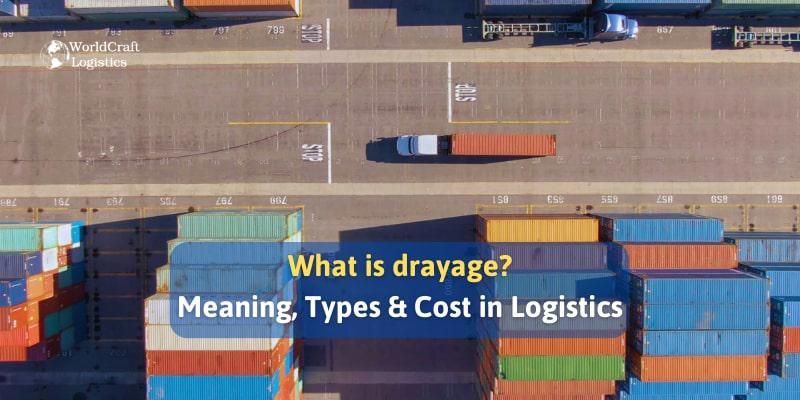
Drayage or Container Drayage refers to the transportation of shipping containers by truck to their ultimate destination. Typically, drayage is a segment of a more extensive transportation process, such as moving goods from a ship to a warehouse. Some studies specifically define it as the pickup or delivery of goods by truck to or from a seaport, border point, inland port, or intermodal terminal within the same urban area. The term "port drayage" is employed when describing short-distance hauls from ports to nearby locations, and it can also involve the internal movement of goods within large structures like convention centers. Drayage plays a crucial role in facilitating the transfer of shipments between different modes of transportation, and the term is also used to denote the fee associated with such services.
Domestic drayage involves transloading products from a marine container into a 53-foot domestic container, which is then transported inland. On the other hand, marine drayage refers to keeping the product in the marine container until it reaches its final destination. Every import or export passing through an ocean port ultimately undergoes some form of drayage. It's estimated that approximately 30 million marine containers enter and leave the United States annually, each necessitating at least two drayage movements.
Note: Drayage definition has been collected and standardized more accurately by Worldcraft Logistics from Wikipedia.
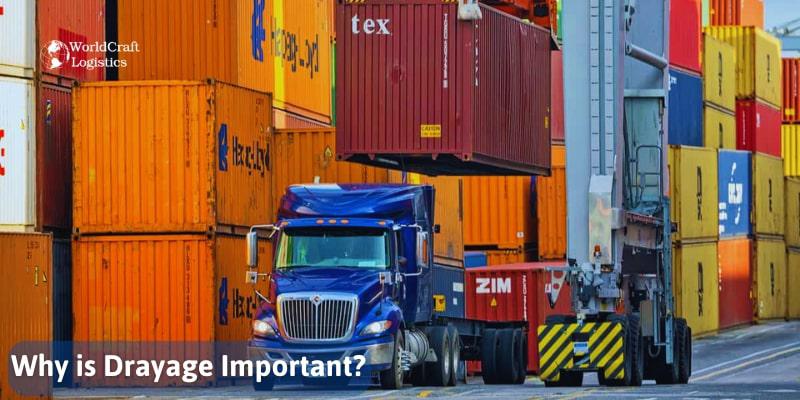
Understanding the significance of freight transportation in the logistics and supply chain operations can be likened to playing dominoes. Many refer to drayage as the "first domino" because, much like the initial domino in a sequence, it significantly influences subsequent activities.
If the first domino doesn't fall in the right direction, the others follow suit. Drayage can have a similar impact on transportation. If containerized cargo doesn't transition swiftly and smoothly from the port to the next mode of transportation, the entire supply chain may face delays.
Take the ports of Los Angeles and Long Beach as examples. These ports collectively form the San Pedro Complex and handle more container ships than any other complex globally. Consequently, the drayage market in this area is substantial, generating billions of dollars annually.
In recent years, both seaports have experienced historic congestion, leading to a substantial number of stranded containers.
Backing up the supply chain in San Pedro is related to several factors, including labor union politics, global trade issues, and changing consumer behavior—more people are shopping online than ever before, resulting in a massive volume of shipped goods.
However, issues such as water depth limitations also pose significant challenges at these ports. Limited yard space, rising transportation costs, and a lack of chassis all contribute to the challenges within the freight transportation service and are issues at the San Pedro Complex.
This underscores that while short-distance transportation is just a small part of the supply chain, it is an indispensable component. If a major disruption occurs with cargo loading and unloading services at a major port, it can impact the entire supply chain, ultimately causing harm to consumers.
Good topic articles for you:
- What is TEU in shipping (Twenty-foot Equivalent Unit)? Meaning & Vessel Sizes
- Transportation Management System (TMS): Useful knowledge & guide for beginners
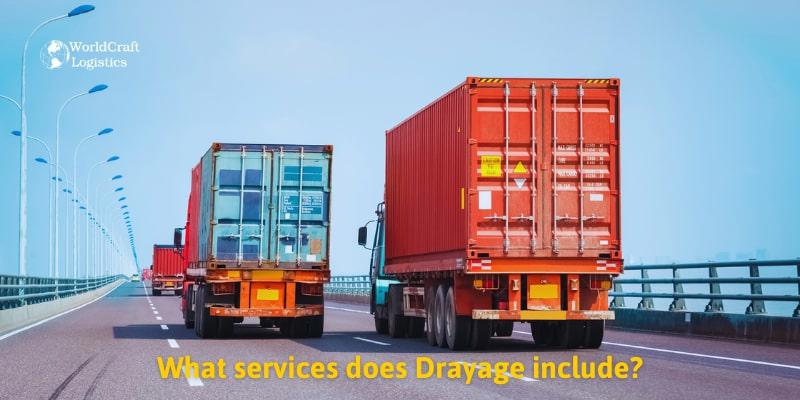
The Intermodal Association of America identifies six types of drayage services, each serving specific transportation needs:
👉Pier Drayage: In this type of drayage, trucks pick up goods from a rail hub and transport them to a pier or dock, where they are loaded onto a ship.
👉Intra-Carrier Drayage: This short-haul drayage is commonly used to transport goods within a transport hub. It is often employed when goods need to be transferred to another dock for plane boarding or taken to the container freight station.
👉Inter-Carrier Drayage: Inter-carrier drayage involves transporting cargo between carriers. This can include rail-to-rail, rail-to-sea, or sea-to-rail movements. For instance, drayage trucks may carry goods from ships at docks to scheduled railroad transport, and vice versa.
👉Shuttle Drayage: Shuttle drayage is utilized to temporarily store excess containers that couldn't fit in docks or shipping hubs. It ensures the safe storage of goods until the next available ship is ready for departure.
👉Expedited Drayage: This type of drayage swiftly transfers goods to their destination and is often chosen for urgent cargo transportation needs. Expedited drayage is a faster process compared to other types, providing quick shipping solutions.
👉Door-to-Door Drayage: Door-to-Door drayage involves transporting goods directly from the port to the customer's doorstep. This type of drayage is frequently employed in e-commerce scenarios where door-to-door delivery services are offered.
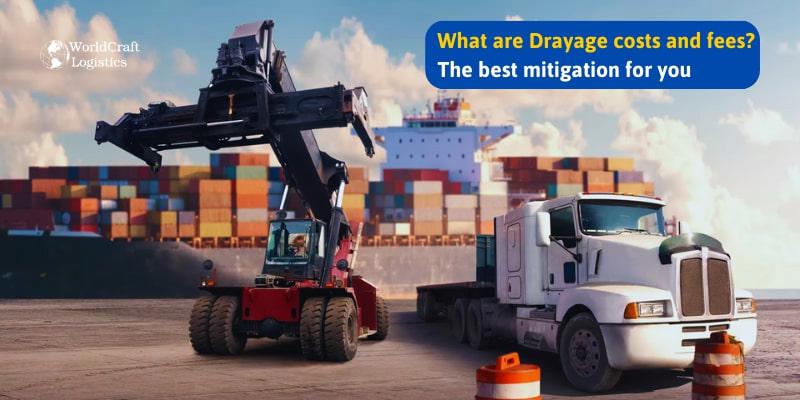
Drayage fees are typically encompassed within the overall shipping costs, particularly in the realm of intermodal transportation. These costs may involve the following components:
👉Line Haul Rate: The expense associated with transporting containers between two points. This rate is calculated based on the distance covered during the trip.
👉Ocean Terminal Charges: Port-related fees, encompassing handling, storage, and container maintenance.
👉Chassis Usage Fee or Chassis Split Fees: The fee incurred for utilizing a chassis to facilitate the movement of goods. A chassis split fee is applicable when the chassis is not available at the port of unloading, requiring the trucker to retrieve it from another location.
👉Drop Fees: Levied when the truck delivers a container to a warehouse and subsequently returns to pick up the empty container at a later time, instead of immediate unloading.
👉Yard Pull or Pre-pull Fees: Charges associated with retrieving a container from a port and storing it in a warehouse before delivery. This practice is often adopted to avoid demurrage fees, which arise when a container remains at the port for an extended period.
👉Special Handling Charges: Fees incurred for any extra handling or specialized equipment necessary for overweight, hazardous, or refrigerated freight.
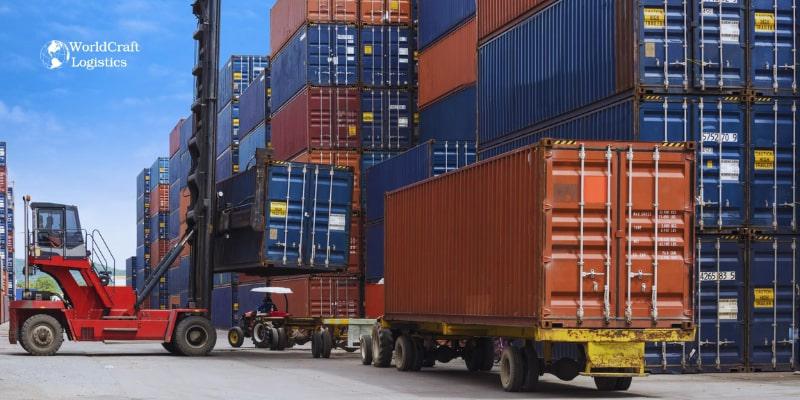
After understanding the types of costs, Worldcraft Logistics LLC would like to share some reducing tips for you:
Let's address some frequently asked questions about drayage.
Yes, drayage involves various fees, including chassis-split fees and drop fees. Typically, fees are incurred when a truck picks up your shipping container upon arrival and again if storage is required.
Like any shipping method, drayage comes with certain risks. Examples include potential customs clearance issues or a lack of carrier capacity when your shipment reaches the marine port.
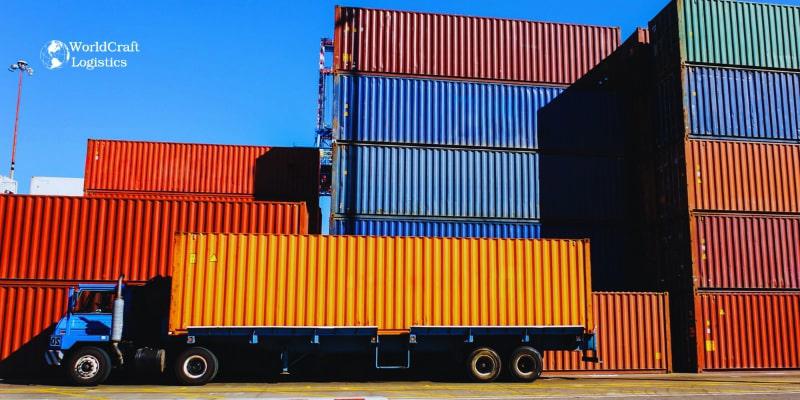
To coordinate drayage services, you need to provide details such as the weight of the load, container size, desired arrival date, and relevant information about the load, including whether it requires refrigeration.
The freight services market is expected to grow by nearly three billion dollars from 2021 to 2025. With more production, increased shipping demand and growing eCommerce, shipping services Freight is more important than ever in global logistics. Thank you for following this article of Worldcraft Logistics.
SEO
Digital Marketing/SEO Specialist
Simon Mang is an SEO and Digital Marketing expert at Wordcraft Logistics. With many years of experience in the field of digital marketing, he has shaped and built strategies to effectively promote Wordcraft Logistics' online presence. With a deep understanding of the logistics industry, I have shared more than 500 specialized articles on many different topics.

Education
01/05/2025

Education
02/18/2025

Education
01/01/2024

Education
08/28/2024

Education
11/13/2023